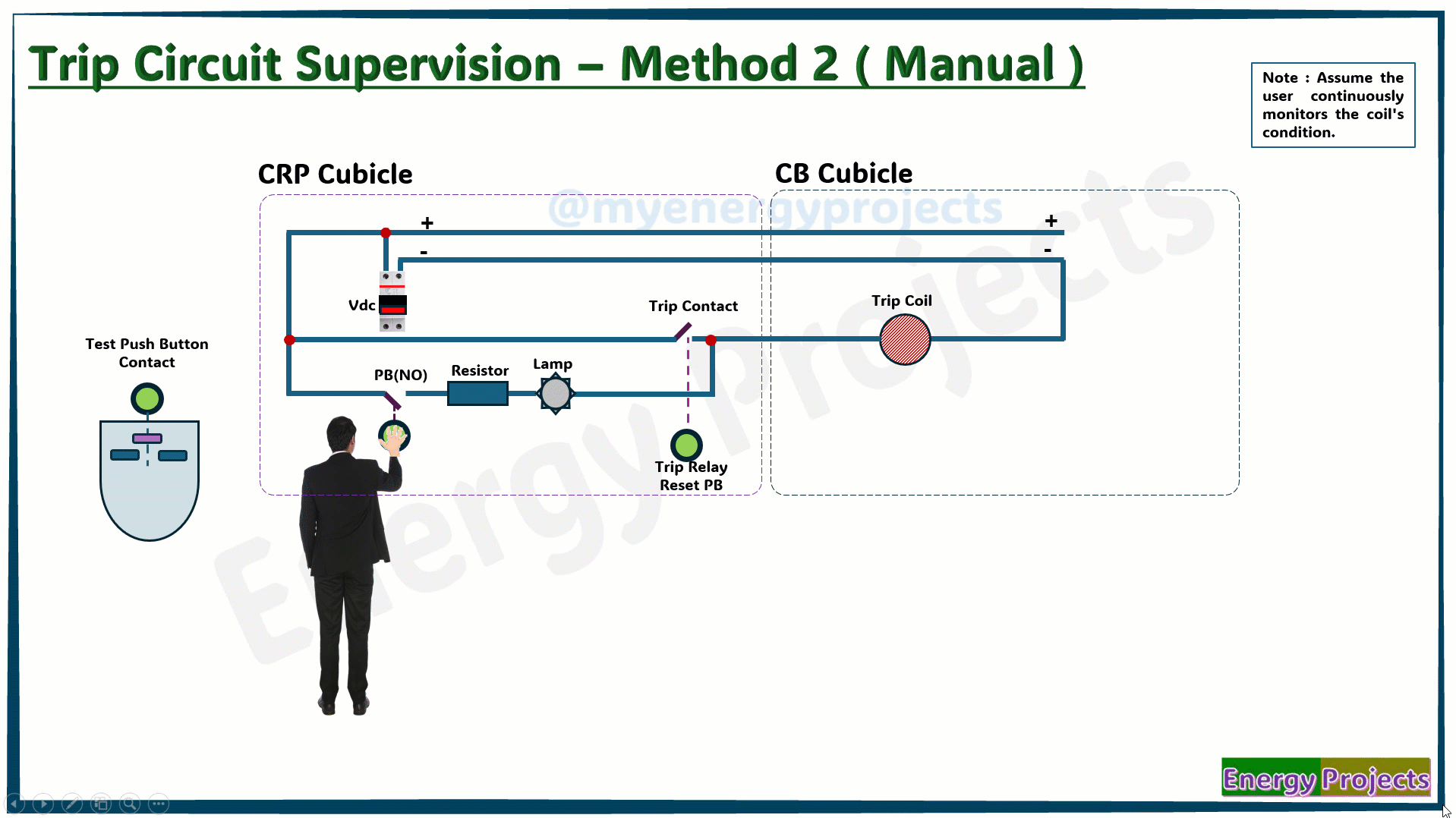02.Lamp with resistor (Manual)
Trip Circuit Supervision
Supervision circuits is a simple circuit mechanism which continuously monitor the coil’s health to detect any failure or disconnection. This ensures reliable breaker operation and system safety. Regular supervision is critical to avoid protection failure during faults.
Method 2 ( Lamp with series Resistor).
The simplest way to supervise a trip coil is by using a series resistor and indication lamp or LED connected across the trip coil circuit. The lamp glows under healthy conditions, indicating that the circuit is complete and the coil is ready to operate. You can see that the lamp lights up immediately when the MCB is powered on.
Behaviour During Trip:
When the relay trips, its contact closes, energizing the trip coil.
This creates a low-resistance path, effectively short-circuiting the lamp-resistor combination.
As a result, the lamp goes off during the trip operation which is normal behaviour and not a fault.
The lamp glows again once the trip contact is reset, indicating that the trip circuit is restored and healthy.


Advantages
Simplicity: Easy to design, install, and understand.
Low Cost: Minimal components make it cost-effective.
No Complex Wiring: Requires minimal control wiring and setup.
Limitation:This method can be used in LV / MV level upto 33kV, depending on the requirement.
Power Draw: The resistor-lamp setup consumes a small amount of power when the test button is pressed.
Disadvantages
No Fault Detail: Cannot distinguish between coil burnout, wiring issue, or loss of supply.
Limited Automation: Not suitable for remote or SCADA-based monitoring.
Visual Indication:The immediate status cannot be indicated to operators through the lamp.
Manual Monitoring Required: Depends on someone noticing the lamp status regularly by press.
Limitation: This method is not reliable for EHV .
CB Control : Circuit breaker (CB) will be able to close independently, even if the trip coil is faulty
Maual Operation: Completely manual operation.
Single Busbar Configuration
Single Busbar with Bus section Configuration
Single Busbar with Transfer busbar configuration
Single Busbar with Bus section + Transfer bus coupler + Section Isolator configuration
Double Busbar with Bus coupler Configuration
Double Busbar with Bus coupler + Bypass Isolator Configuration
Double Busbar with Bus coupler + Transfer Buscoupler configuration
Mesh Busbar configuration
One and Half Breaker Busbar Configuration
